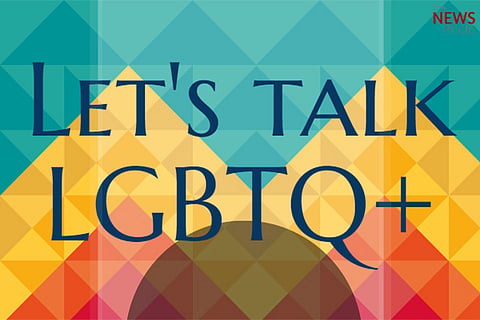

As Tamil Nadu went to polls in 2016, an openly-intersex person contested the electoral battle, perhaps for the first time ever in the history of Indian democracy. Not only was Gopi Shankar open about zis gender, ze (the pronoun preferred by Gopi) embraced it and fought against the regressive mindset of the society to help empower sexual minorities. Ze did not win, and ze faced several hurdles on the way, but ze stands testimony to how far we have come as a society, and is shining beacon of hope as to how far we can go.
For Indians who belong to sexual minority groups, like lesbians, gays, bisexuals, transgender people, intersex people, asexual people and several other groups with their own gender identities and sexual inclinations – all the groups which we will henceforth collectively call LGBTQ+ - the country is slowly opening up in acceptance. We have had a fair amount of setbacks, Section 377 being the biggest. But the narratives of struggles and triumph are emerging. They are challenging our archaic definitions of what it is to be man, woman, transgender, gay, bisexual, lesbian or genderqueer. They are giving way to LGBTQ+ Pride.
So what is LGBTQ+ pride? The concept originates from the 1969 Stonewall riots in Manhattan, a tipping point for the Gay Liberation Movement in the United States. In the United States, the last Sunday in June was initially celebrated as “Gay Pride Day,” but the actual day was flexible.
The day soon grew to encompass a month-long series of events. Today, celebrations include pride parades, picnics, parties, workshops, symposia and concerts. Memorials are held during this month for those members of the community who have been lost to hate crimes or HIV/AIDS. The purpose of the commemorative month is to recognize the impact that lesbian, gay, bisexual and transgender individuals have had on history locally, nationally, and internationally.
In 1994, a coalition of education-based organizations in the United States designated October as LGBT History Month. In 1995, a resolution passed by the General Assembly of the National Education Association included LGBT History Month within a list of commemorative months.
The concept gradually made its way to India. After Shakuntala Devi published the first study on homosexuality in India in 1977, there was wider awareness of an anti-homosexuality law - Section 377. With this, the discourse on LGBTQ rights and India’s track record on the same began.
Section 377 was struck down by the 2009 Delhi High Court decision Naz Foundation vs. Govt. of NCT of Delhi, which found Section 377 and other legal prohibitions against same-sex conduct to be in direct violation of fundamental rights provided by the Indian Constitution.
This came as a huge victory and paved the way for the next step - marriage equality in India. But, the ruling was reversed in December 2013. The Supreme court upheld the introduction of a law that criminalises gay sex, in a ruling that reversed the landmark 2009 Delhi High Court order which had decriminalised homosexual acts. The court said it was up to parliament to legislate on the issue.
After this major setback, the voices have only gotten louder. Discussions have graduated from behind closed doors to dining tables and public parks. More and more are coming forward to push for inclusivity and claiming their space in this heteronormative society.
The News Minute marks LGBTQ+ Pride Month with a comprehensive series of stories that detail the complexities of coming out, transitioning and integrating with society. A whole array of first person narratives and innovative storytelling on the lighter side, on the grey areas and on representation will make up our coverage. In the coming days, you will read stories of horror and hope, ideas which are unfamiliar and provocative, and about an inclusive way forward.
It’s a long, arduous path to equality, but in keeping the conversation going, we hope to effect a change in mindsets.
Read our explainer on sex and gender here to get the ball rolling.
There's a lot more to LGBTQ+ than the rainbow filter in your profile picture. Read our exhaustive explainer here.